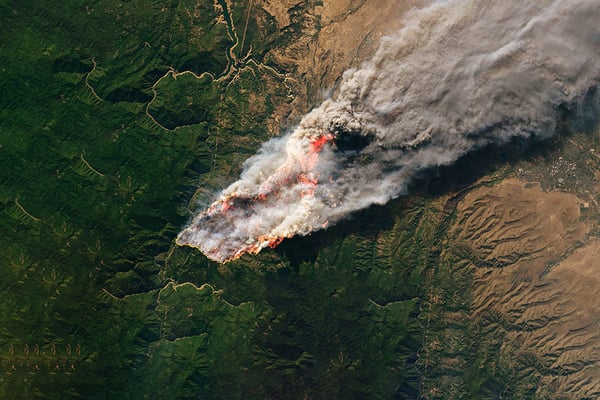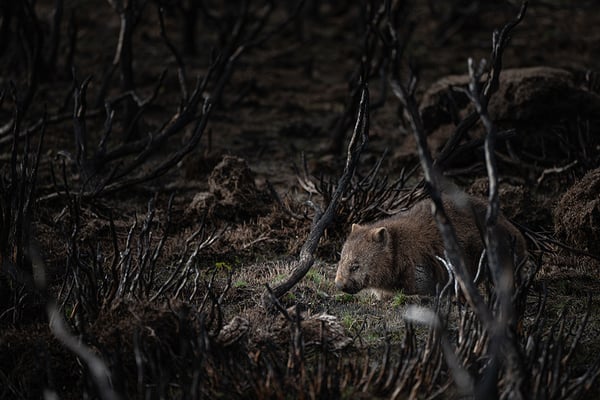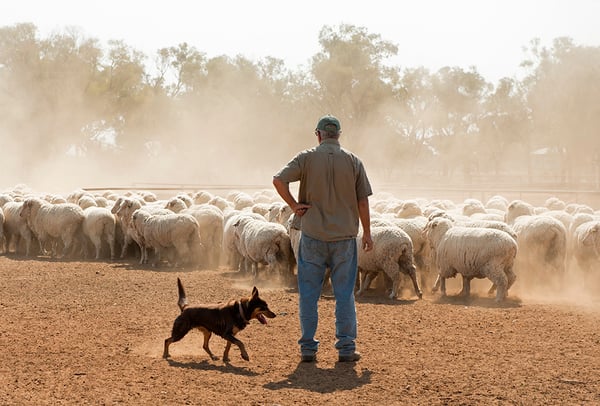Hailstorms Are Shifting South: What Does This Mean for Risk Assessment?
Hailstorms have long been one of Australia's most damaging weather events, causing billions in...
Climate risk and other natural hazards are a recurring nightmare for governments, as they can quickly derail any budget.
These multibillion-dollar catastrophes make true the proverb "the best laid plans of mice and men often go awry". A saying thought to have originated in the poem "To a Mouse" by Robert Burns, which was published in 1785. In the poem, Burns compares the plans of mice and men, and suggests that they are both subject to the same forces of chance and misfortune. This is a reminder that we should not be too attached to our plans, as they may not always work out the way we want them to. It is also a reminder that we should be prepared for the unexpected, as things can and do go wrong sometimes.
But when it comes to climate risk, we can do better than blame the unexpected. We can predict what, when and where disaster is likely to strike. Spatial risk data provided by technologies such as Climatics are quantifiable, transparent, and defensible. Important attributes for Directors and managers when identifying, disclosing and remediating predictable weather threats. Drought, fire, and cold are major threats on our immediate horizon. With three consecutive years of La Niña and a looming El Niño, the risk of future calamities has increased. This is at a time when the economy is highly vulnerable to any further damage.
In 2020, the Australian economy was hit hard by the COVID-19 pandemic. The Reserve Bank of Australia (RBA) responded by cutting interest rates to a record low of 0.1% in an effort to stimulate the economy. In 2021 inflation began to rise, driven by factors such as supply chain disruptions and strong demand for goods and services. In 2022, inflation continued to rise, reaching a 20-year high of 7.3% in the March quarter. As of May 2023, the RBA has raised interest rates by 1.25 percentage points. The Reserve Bank of Australia (RBA) has announced 10 interest rate rises since May 3, 2022.
With increasingly high energy costs still entrenched in the economy, the Consumer Price Index (CPI) rose by 5.1% in the March quarter 2023. This means that the real interest rate is now negative. A negative real interest rate means that the purchasing power of your savings is declining.
In the past, the Treasury was more likely to rely on (budgeted) contingency reserves and emergency funding to cover climatic disasters. However, in recent years, the Treasury has placed a greater emphasis on using catastrophe bonds. The Treasury can issue catastrophe bonds to raise money to cover the cost of natural disasters. These bonds are sold to investors who are willing to take on the risk of a natural disaster in exchange for a higher interest rate. Given the current economy and the high interest rates the government will need to offer, these bonds will be a significant expense, adding to budget liabilities and ultimately increasing the burden on taxpayers.
Let’s not forget how much El Nino cycles have cost us in the past. The 2019-2020 bushfires in Australia were the costliest natural disaster in the country's history. The fires burned over 12 million hectares of land, destroyed over 3,000 homes, and killed over 30 people. The total cost of the fires is estimated to be between $100 billion and $150 billion. This includes the cost of lost agricultural production, livestock losses, water infrastructure damage, and bushfire damage.

The fires had a devastating impact on the Australian economy. The tourism industry was particularly hard hit, with visitor numbers falling by 20% in the year following the fires. The agriculture sector was also badly affected, with crop and livestock losses estimated to be in the billions of dollars.

The most recent drought in Australia began in 2017 and continued through 2020. It was one of the longest and most severe droughts in Australia since records began in the 19th century. The Federation Drought from 1895 to 1903 was the worst in Australia’s history, if measured by the enormous stock losses it caused. It ended squatter-dominated pastoralism in New South Wales and Queensland, as bank foreclosures and the resumption of leases led to the partition of large stations for more intensive settlement and agricultural use. The Millennium Drought (2001–09) is also ranked among the worst.
The 2017-2020 drought affected all states and territories in Australia, but it was particularly severe in the eastern states of New South Wales, Queensland, and Victoria.
The drought had a devastating impact on the Australian economy. It caused widespread crop failures, livestock losses, and water shortages. The drought also led to an increase in bushfires as previously mentioned, which caused further damage to property and infrastructure.
The drought also had a significant impact on the Australian environment. It caused widespread land degradation, water pollution, and loss of biodiversity.
Some specific costs of the drought:
In addition to these direct costs, the drought also had a number of indirect costs. These include the cost of lost productivity, the cost of social welfare payments, and environmental damage.
Back to the current threat and what it means for us now. Since 2020, three consecutive years of La Niña have delivered multiple, and sustained extreme rainfall events. This in turn has turbo charged vegetation growth. The accumulation of flammable materials has increased the risk of bushfires, which are now just a spark away. What about drought and cold then?
Cold El Niño events are associated with below-average rainfall in Australia, which can lead to drought conditions and livestock losses. In the 1997-1998 El Niño event, for example, an estimated 2 million cattle and sheep died in Australia due to drought and heat stress.
The severity of livestock losses during a cold El Niño event will vary depending on the region of Australia and the severity of the drought. However, in general, livestock losses are likely to be greatest in areas that are already prone to drought, such as the Murray-Darling Basin.
El Niño and La Niña have perhaps the strongest influence on year-to-year climate variability in Australia. They are a part of a natural cycle known as the El Niño–Southern Oscillation (ENSO) and are associated with a sustained period (many months) of warming (El Niño) or cooling (La Niña) in the central and eastern tropical Pacific.
During La Niña events, there is evidence that ENSO events affect the livestock and fisheries sectors. A report by the Philippine Bureau of Fisheries and Aquatic Resources shows El Niño may reduce annual fish catches by 20 percent in open waters and by 23 percent in waters within 15 kilometers of the shoreline.
According to a report by the Australian Bureau of Agricultural and Resource Economics and Sciences (ABARES), on average, cropping farms face greater climate risk than beef farms, while mixed-cropping livestock farms sit in-between these extremes. Cropping farms are subject to large declines in production and revenue in drought years (due to reduced crop yields), while livestock farms can partially offset drought impacts in the short-term by increasing livestock sales (i.e., de-stocking)
The 1997-1998 El Niño event was one of the strongest on record. It caused widespread drought and heat stress in Australia. An estimated 2 million cattle and sheep died and the event cost the Australian economy an estimated $10 billion.
This was a major wake-up call for Australia. It showed how vulnerable the country is to climate risk and how important it is to take steps to mitigate the impact of extreme weather events.
The 1997-1998 El Niño event had a significant impact on consumer pricing of agricultural products in Australia. The drought caused by the event led to a decrease in the supply of agricultural products, which in turn led to an increase in prices. For example, the price of beef increased by 50% and the price of lamb increased by 30%.
The impact of the El Niño event on consumer pricing was felt most acutely by low-income households, who spend a larger proportion of their income on food. The event also had a negative impact on the Australian economy, as it led to a decrease in agricultural exports and an increase in government spending on drought relief.
The 1997-1998 El Niño event is a reminder of the vulnerability of Australia's agricultural sector to physical and acute climate risks. Past events are a strong indicator of future risks. With the right data and tools, we can accurately predict the probability of such events with a high degree of spatial accuracy. Effective mitigation using tools such as Climatics can substantially reduce risk.
Despite our hot and arid reputation, Australia is no stranger to cold and frost. The country's climate is characterized by warm summers and cool winters, and frost can occur in all parts of Australia, even in the tropics.
Frost can cause significant damage to agricultural crops, and the economic losses can be substantial. In 2015 a severe frost event in the state of Victoria caused an estimated $1 billion in damage to agricultural crops.
The most vulnerable crops to frost damage are those that are sensitive to cold temperatures, such as fruit and vegetables. Frost can also damage cereal crops, such as wheat and barley.
In addition to direct damage to crops, frost can also lead to secondary problems, such as increased susceptibility to pests and diseases and damage infrastructure, such as fences and buildings.
Some other recent examples:
Frosts are more likely in El Niño years and are associated with drier conditions in which can lead to cooler night-time temperatures. In addition, El Niño events can also lead to reduced cloud cover, another contributor to cool night-time temperatures.
History both recent and in the distant past are replete with examples of extreme weather events. It is cyclical and what has happened before will happen again. Data such as that provided by Climatics, quantifies and spatialises this risk. Add to that our understanding of climatic systems such as ENSO, and we have a highly developed capability to confidently predict weather events in the medium, especially those with high impact.
Hailstorms have long been one of Australia's most damaging weather events, causing billions in...
Tropical Cyclone Zelia is poised to become one of the most significant weather events of the...
It has been a noticeably drier year across most of Australia so far compared to the last few years,...